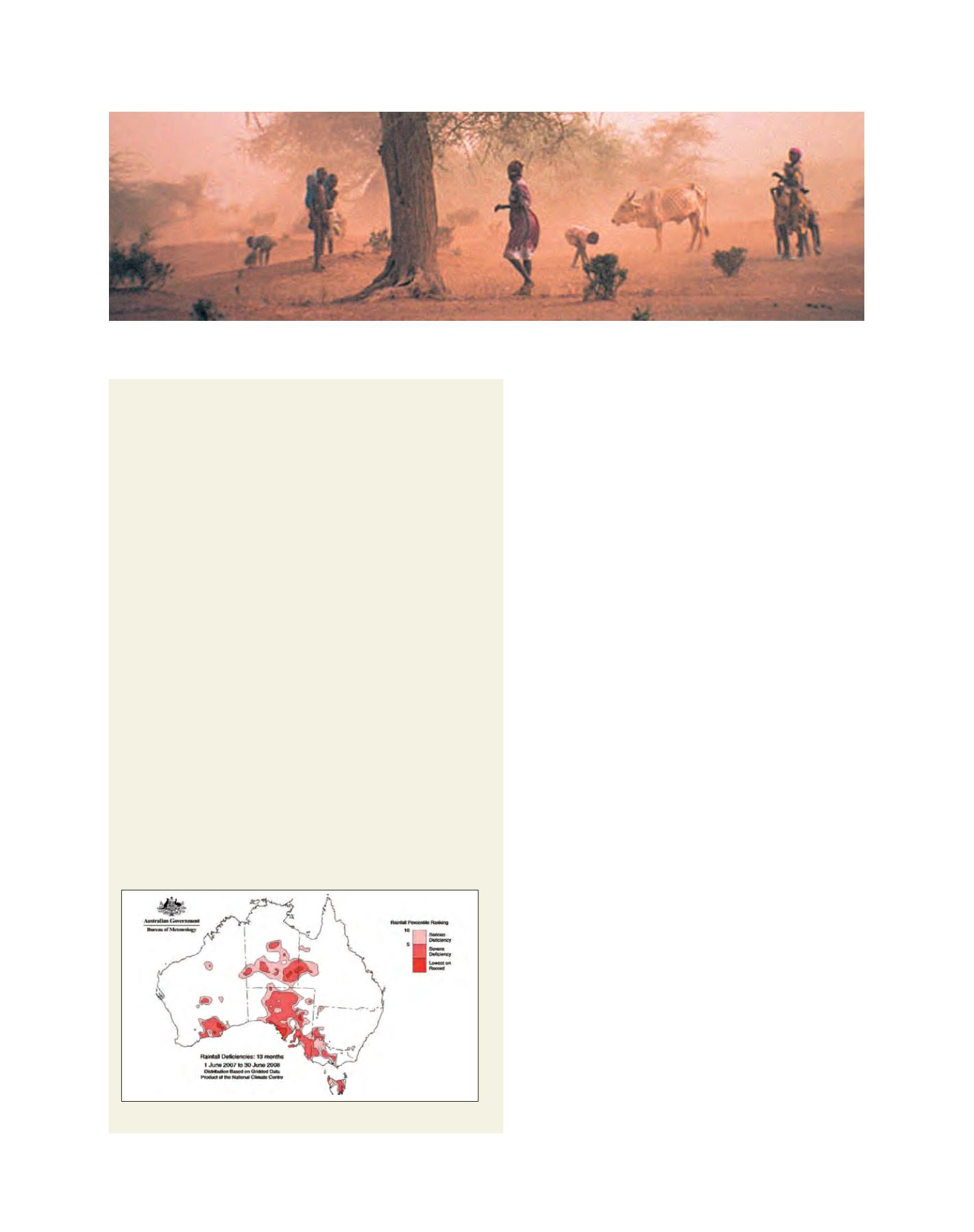

[
] 192
O
bserving
, P
redicting
and
P
rojecting
C
limate
C
onditions
Centres. In addition, consensus forecasts provided by
Regional Climate Outlook Forums (RCOFs) should be
considered whenever they are available.
2
Adaptation
and downscaling of these products to a scale pertinent
to the geographical scope covered by climate watches
is also required and should be based on scientifi-
cally sound techniques and methods. These products
are generally based on the probability of averages of
selected parameters (from weekly for monthly fore-
casts to thrice-monthly for seasonal forecasts) and
whether these averages are below, close to, or above
the local climatological references (normals).
The output of a climate watch system
3
includes:
initial reports outlining the ongoing and/or expected
climate anomaly; updated statements at user-agreed
time intervals informing on the progress of the
anomaly; and final statements stating the expiration
of the warning. The content, format and dissemina-
tion plan of climate watches should consider specific
purposes and geographical scope, as required by
the target users. It is also important that the system
includes a performance verification procedure, which
should be carried out systematically as an integral part
of the system operation. Users should be informed of
verification results on a regular basis. This builds trust
between the issuing organization and the users, as well
as constituting an assessment of the effectiveness of
the user-agreed criteria. Long-term, the verification
system provides a knowledge asset that can be used
for performance improvement.
System requirements
The issuing organizations (NMHSs) need to meet a
minimum set of requirements for operating a climate
watch. They should be able to provide the following
climate functions on an operational basis:
• Timely observations of current climate conditions
for their area of responsibility, as well as adequate
historical climate data
• Timely monitoring and analyses of current climate
anomalies
• Access to current global climate forecasts and the
technical capabilities to interpret and downscale
them to their region
Image: Omar Baddour
Example of a climate watch
Initial climate watch
Bureau of Meteorology National Climate Centre
CLIMATE WATCH FOR RAINFALL DEFICIENCY
Climate Watch valid for South Australia and western Victoria.
Issued on 3rd July 2008 – Valid until 4th August 2008
Areas of serious to severe rainfall deficiencies across South Australia and
western Victoria are likely to persist during the coming season. Most of SA and
western Victoria have recorded rainfall totals in the lowest decile range for the
thirteen-month period from 1st June 2007 to 30th June 2008. The outlook
for the next three months, July to September, derived from the Bureau of
Meteorology’s statistical forecast model, shows that the chance of exceeding
the median rainfall is only between 30 and 40% for these areas affected by
rainfall deficits. Outlook confidence for this forecast is moderate over northern
and central SA, with a skill level of around 60%. The confidence level for
western Victoria low, although in several areas the July to September rainfall
total would need to be decile 8 or higher for the deficits to be removed.
These figures meet or exceed the criteria for a rainfall deficit Climate Watch
for this region, being:
– Rainfall for the past three or more months: decile one or lower.
– Chance of rainfall being greater than the median: 40% or lower.
– Forecast skill score: 55% or greater.
Climate situation: Sea surface temperatures in the central equatorial
Pacific have gradually increased over the previous two months and are now
generally close to average. The final remnants of the 2007/08 La Niña event
continue to linger in the western Pacific, although the overall ENSO state is
rated as neutral. A majority of computer models in a recent survey indicated
that neutral conditions are likely to persist for the next three to six months.
However, these same models show that a positive dipole of Indian Ocean
temperatures (IOD) may persist for a few more months. This phase of the IOD
has been linked with reduced rainfall over central and southeastern Australia.
The monthly Climate Watch Africa bulletin provides analysis on important climatic factors including monsoon winds, rainfall and temperature
Source: Australian Bureau of Meteorology (BoM)
















